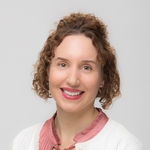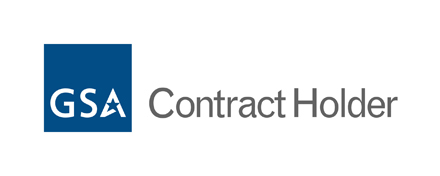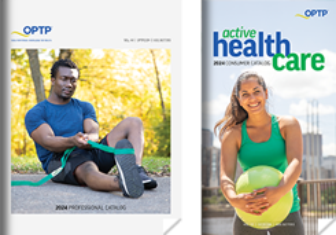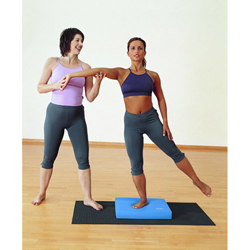- Moshé Feldenkrais
The annual Feldenkrais Method® conference is taking place June 26-30 in Boulder, CO. Learn more about the Feldenkrais Method and its benefits in this interview with Feldenkrais Method Trainer Candidate Anastasi Siotas.
Q. What is the Feldenkrais Method®?
A. In simple terms, the Feldenkrais Method provides a way for people to learn how to perform everyday activities differently, helping them avoid injury and experience more vitality and happiness in their lives. It’s not a therapeutic method per se – it’s more of an educational methodology that can provide therapeutic benefits.
The Feldenkrais Method® helps you sense and understand, through movement and the experience of moving, how you might do things more efficiently. That could mean sitting in a more organized way, because even though sitting isn’t an ideal activity to do for a long time, you can learn through exploring movement how to do it more optimally. It’s a way of mindfully being present to your body and paying attention to how you’re performing daily activities.
Q. What is the purpose of the Feldenkrais Method?
A. Feldenkrais is a ground-breaking modality that helps address how we can learn to live pain-free and conserve our energy so we can live comfortably for as long as possible. There are so many things in our modern convenience driven way of life that draw us away from our evolutionary endowment. Since the industrial and internet revolutions we’ve changed our activities of daily life very rapidly – especially in the last 100 years – away from the kind of physical tasks that our bodies evolved to be able to do to keep us healthy, like hunt for food or escape predators on a daily basis.
Feldenkrais work taps into a holistic and organic understanding of human development and our maturation process from childhood to adulthood. What we learn in this process includes the acquiring of habits, some good and some not so useful. By exploring our innate developmental movement patterns and those from our evolutionary biological history – we can upgrade our habits and by re-exploring movement, we come to understand ourselves better. We become more efficient in how we move while learning to divest ourselves from painful physical habits, thought habits, or emotional habits that leave us in a less than optimal state.
Q. What are the main benefits of the method?
A. Awareness through Movement® Feldenkrais lessons offer ways to discover how you do what you do so that you might choose to shift the way you perform any action by having explored new options that weren’t on your radar. In this way, you discover new options that offer greater freedom. I also believe it can help you live longer because if you’re more efficient in the way you use your energy, then you have more energy left for the things you want to do – you’re not wasting effort doing things that are counterproductive.
Q. What are some unhealthy habits that the Feldenkrais Method can help people break?
A. To be healthy, we have to have good use of every part of ourselves, nothing should be left out. Our entire musculature and skeletal system shapes and remodels itself around the activities that we most often do. As we live ever more sedentary lifestyles, spending many hours each day looking at devices that bring our heads forward – our body is adapting to that and a forward head is less than optimal. Compare this to the hunter-gatherers who held their head high, as they ran around chasing down their food as opposed to going to the supermarket or a restaurant.
Many of us do things to counteract our sedentary lifestyle – we go to the gym, we run, we take part in a variety of activities, but there’s still such a large percentage of our day that most urban people spend being sedentary. This lifestyle contributes to upper-body flexion because our head is held forward to engage with our virtual world. Our skeleton and muscles will adapt to keep us up and keep us going but we’re running into a lot of trouble with our forward head posture. More and more people are experiencing chronic neck pain, shoulder pain, lower back pain – it’s really a global problem for first world countries. This is because we’re not using our bodies for any long period of time in accord with what evolution has dictated. Our biped structure has been shaped by the way we evolved to move over hundreds of thousands of years. Our convenient modern city-based lifestyle is putting us ever more rapidly out of step with nature.
Q. Who can benefit from the Feldenkrais Method?
A. I have a huge variety of clients. I work with children, seniors, people in the performing arts – actors, dancers, musicians. I work with athletes as well as people with neurological impairments – Stroke, Parkinson’s, Traumatic Brain Injury. The variety is endless because everybody moves. And I believe if you move, you can improve.
People are not coming to me to be fixed. They’re coming to me to learn about what’s going on with them. It’s an educational process that we engage in together. Since it’s primarily a learning process I help them find ideas and practical tools to go away with and work on so they can continue to improve.
Q. What is your goal in teaching this method?
A. The Feldenkrais Method has helped me live a better life, a more comfortable life and I want to help others do the same. My goal is pretty high. We only have this one body we live in and we have this one life to live. We might as well use our clever brains to help us make the most of it.








